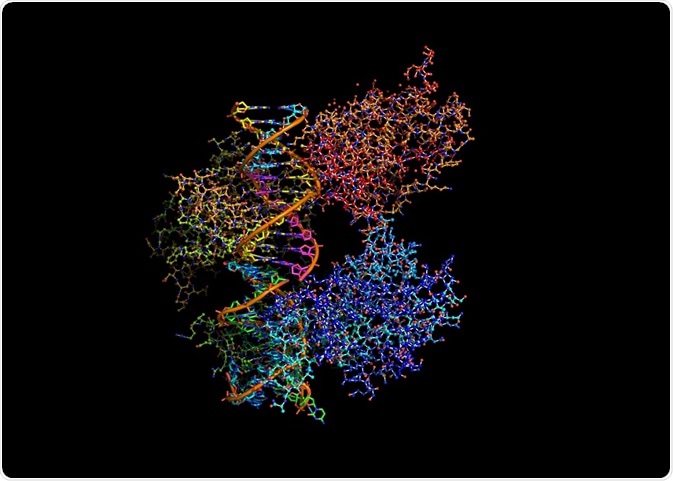Affinity chromatography and protein A/G purification are antibody purification methods that are used to remove ligands from extracts. However, they have different levels of specificity and methods, leading to different applications.
 ibreakstock | Shutterstock
ibreakstock | Shutterstock
Affinity chromatography
Affinity chromatography can be applied to a wide array of proteins and works by exploiting the binding properties between proteins and ligands. It involves passing a recombinant protein mixture over a chromatography column which contains an immobilized ligand which binds to affinity-tagged proteins. The contaminants and left-overs are then removed by washing and the purified bound proteins are eluted.
Affinity chromatography can be divided into two categories: one uses biological structures or amino acid sequences on the protein as the binding site for purification; the other involves engineered proteins which have had a particular amino acid sequence added, the “tag”. This means that affinity media can be customizable or "ready to use".
Protein A/G Affinity
Protein A/G affinity is a type of affinity chromatography that can be applied to antibodies. A and G proteins from Staphylococcus and Escherichia can be used to purify antibodies from serum, ascitic fluid, the supernatants of hybridoma cells, etc. These proteins have very high selectivity and stability, which has made them a favorite.
Escherichia protein A/G is highly recommended for purifying polyclonal IgG from many species. Of the mammalian antibodies, IgG is the predominant one present in serum and is produced during a secondary immune response. There are further subclasses of IgG, for which the affinity of protein A differs.
In humans, protein A has high affinity for all except IgG subclass, while protein G has high affinity to all four subclasses. However, protein A has some affinity for other antibodies (IgA, IgM, and IgE), while protein G has no affinity for these antibodies. Protein A and G bind to the Fc region of an antibody.
Comparison of affinity chromatography and protein A/G purification
Both affinity chromatography and protein A/G purification have an advantage over other purification methods: they use specific biological interactions between molecules.
Other purification methods use differences in size to separate molecules, such as size-exclusion chromatography, and strength of ionic interactions, such as ion exchange chromatography. This makes these less specific than affinity chromatography and protein A/G purification.
Affinity chromatography can achieve high degrees of purification; however, this is dependent on the specificity of the interaction. In some cases, it can be the only step in a purification strategy.
Protein A/G purification has the advantage of simplicity compared to other affinity chromatography. A and G proteins are naturally occurring and therefore don’t require engineering like the tagged version of affinity chromatography. They also have high purity and yield. Protein A/G purification can be carried out on most kinds of chromatography systems.
Although protein A/G purification is commonly applied to IgG antibodies, it can be used on a host of other antibody subtypes and in different species. Other types of affinity chromatography which are not customized can be applied to histidine, albumin, endotoxins and other proteins.
If desired, lower specificity and more broad targeting can also be performed using affinity chromatography. Therefore, while protein A/G purification have the advantage of quick and specific purification of antibodies, affinity chromatography can be applied to a broader range of proteins and do not need to be tagged, making it less time consuming.
Sources
- www.bio-rad.com/…/protein-g-affinity?ID=LUSMML97Q
- www.bio-rad.com/…/affinity-chromatography?ID=LUSMJIDN
- www.thermofisher.com/…/overview-affinity-purification.html
- www.bio-rad.com/…/affinity-chromatography?ID=LUSMJIDN
Further Reading
- All Chromatography Content
- Chromatography Overview
- Gas Chromatography-Mass Spectrometry (GC-MS) Applications
- High Performance Liquid Chromatography (HPLC)
- Liquid Chromatography-Mass Spectrometry (LC-MS) Applications
Last Updated: Jan 14, 2019

Written by
Sara Ryding
Sara is a passionate life sciences writer who specializes in zoology and ornithology. She is currently completing a Ph.D. at Deakin University in Australia which focuses on how the beaks of birds change with global warming.
Source: Read Full Article


